==================
Florida Splendors is supported by our audience. When you purchase through one of our links, we may earn a small affiliate commission. As an Amazon Associate I earn from qualifying purchases. Your cost is not affected.
Are you ready to embark on an unforgettable adventure by kayaking Big Cypress National Preserve, one of Florida’s most breathtaking natural wonders? Exploring this pristine wilderness from a kayak offers a unique perspective where towering cypress trees, diverse wildlife, and tranquil waters converge. Whether you’re a seasoned paddler or new to the sport, this adventure captivates your senses and leaves you yearning for more. Join us as we delve into the must-see sights and insider tips for an unforgettable kayaking journey through this stunning preserve.
Kayaking Big Cypress National Preserve, Ochopee: Exploring Florida’s Hidden Waterways
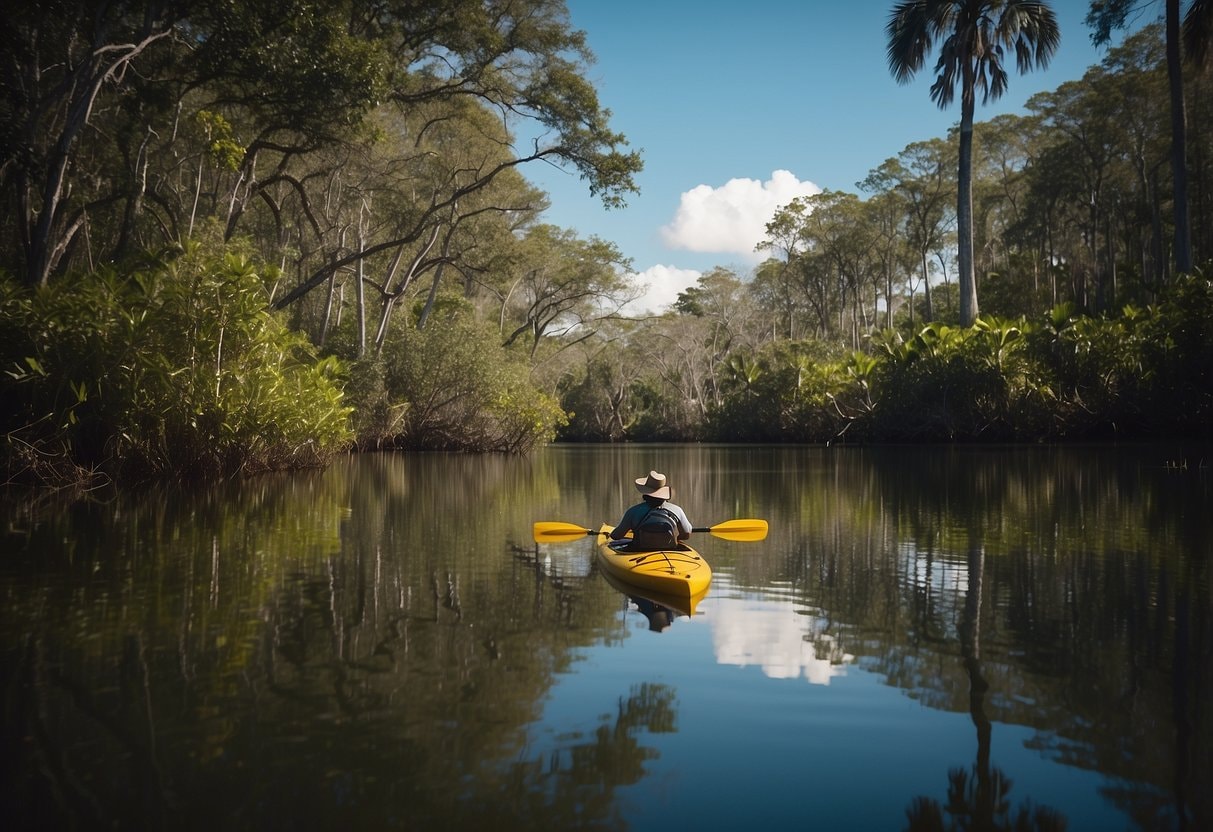
Kayaking Big Cypress National Preserve in Ochopee, Florida, offers a unique experience. You can explore over 729,000 acres of swampland, home to a diverse mix of tropical and temperate plants and animals. The preserve is a natural playground for millions of visitors and locals alike.
Kayaking in Big Cypress lets you discover hidden waterways and spot wildlife in their natural habitat. If you’re lucky, you might see alligators sunning on logs, colorful birds flying overhead, or even the rare Florida panther. The calm waters and winding creeks provide a peaceful escape from the busy world.
Before you go, make sure to check the water levels and tides. The best time to visit is during the dry season, from November to April, when the weather is cooler and mosquitoes are less active. Remember to bring sunscreen, water, and a map of the area.
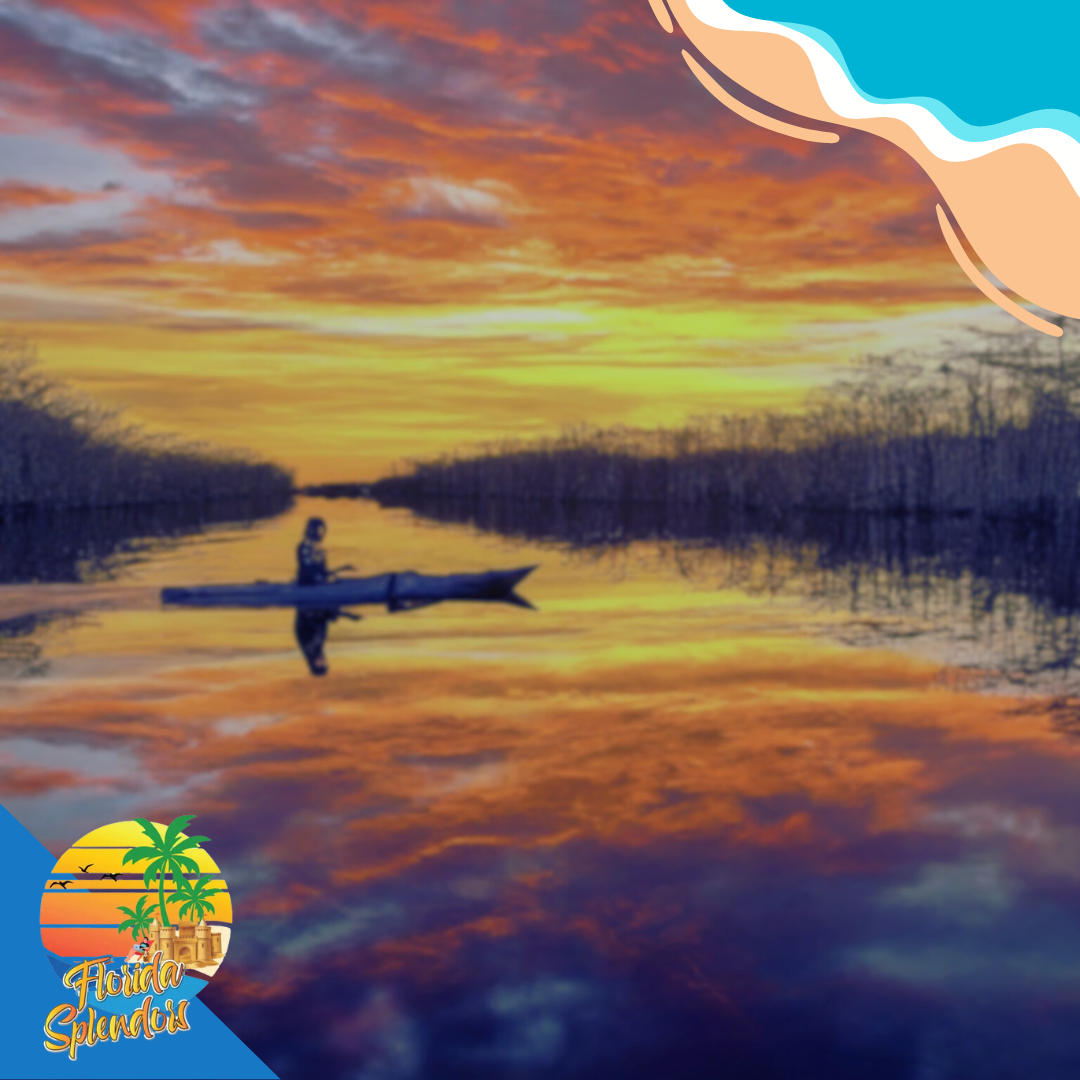
Key Takeaways
- Paddle through Big Cypress’s diverse habitats, from swamps to pine forests, and spot unique wildlife.
- Plan your trip during the dry season (November-April) for cooler weather and fewer mosquitoes.
- Prepare by checking water conditions, bringing the right gear, and following safety guidelines, including notifying someone of your plans.
- Enjoy the beginner-friendly Halfway Creek Loop, the challenging Turner River Trail, or the multi-day Wilderness Waterway.
- Use local outfitters for rentals and guided tours. Follow park regulations and obtain necessary permits to protect the preserve.
History of Kayaking in Big Cypress National Preserve
Kayaking Big Cypress National Preserve has a rich history of water-based exploration. Native Americans were the first to navigate its waterways using dugout canoes. In the early 20th century, settlers and explorers used small boats to traverse the swampy landscape. Kayaking as a recreational activity emerged later.
The preserve was established in 1974, opening up new opportunities for kayakers to explore its diverse ecosystems. Rangers and researchers used kayaks to study and protect the area’s unique flora and fauna. In the 1980s and 1990s, kayaking grew more popular as eco-tourism increased. Visitors could rent kayaks or bring their own to paddle through cypress swamps and mangrove forests.
Today, you can enjoy kayaking on numerous waterways in Big Cypress. Popular routes include Turner River, Halfway Creek, and Nobies Bay. The preserve offers guided kayak tours, allowing you to learn about its history and ecology from knowledgeable rangers.
These tours have become a favorite way for visitors to experience the beauty of Big Cypress. Kayaking continues to play a vital role in conservation efforts. It allows scientists and volunteers to access remote research areas and monitor wildlife populations.
Geography and Ecology of Big Cypress National Preserve
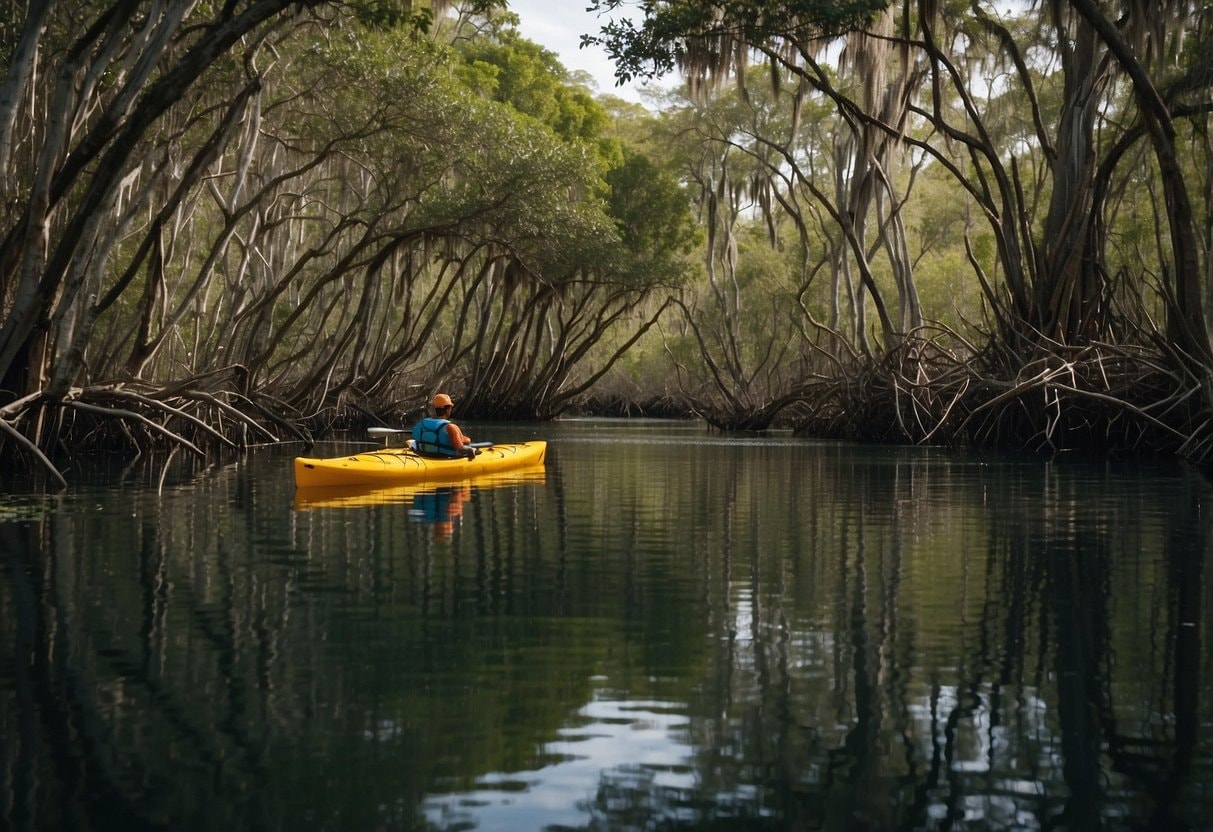
Kayaking Big Cypress National Preserve is a unique experience in this vast swamp in South Florida, covering over 729,000 acres of land. The preserve is home to a mix of tropical and temperate plant communities, creating a one-of-a-kind ecosystem. This area is essential to the health of the neighboring Everglades, with its freshwaters supporting rich marine estuaries along Florida’s southwest coast. The preserve’s landscape is diverse, including:
- Swamps
- Marshes
- Pine forests
- Hardwood hammocks
Big Cypress is known for its wildlife. The Florida Panther, an endangered species, calls this place home. Less than 150 of these elusive cats remain in the wild. Water plays a crucial role in the preserve’s ecology. The area experiences wet and dry seasons. This cycle shapes the habitat and affects the wildlife.
You can explore the preserve by water. Canoeing and kayaking trails offer a unique way to experience the landscape. Popular routes include the Halfway Creek Canoe Trail and the Turner River Canoe Trail. The preserve shares a border with Everglades National Park. Together, they maintain natural areas with different but equally important resources.
Preparing for Your Kayak Trip
Getting ready for a Kayaking Big Cypress National Preserve trip takes careful planning. You’ll need the right gear, weather awareness, and safety know-how to enjoy your adventure fully.
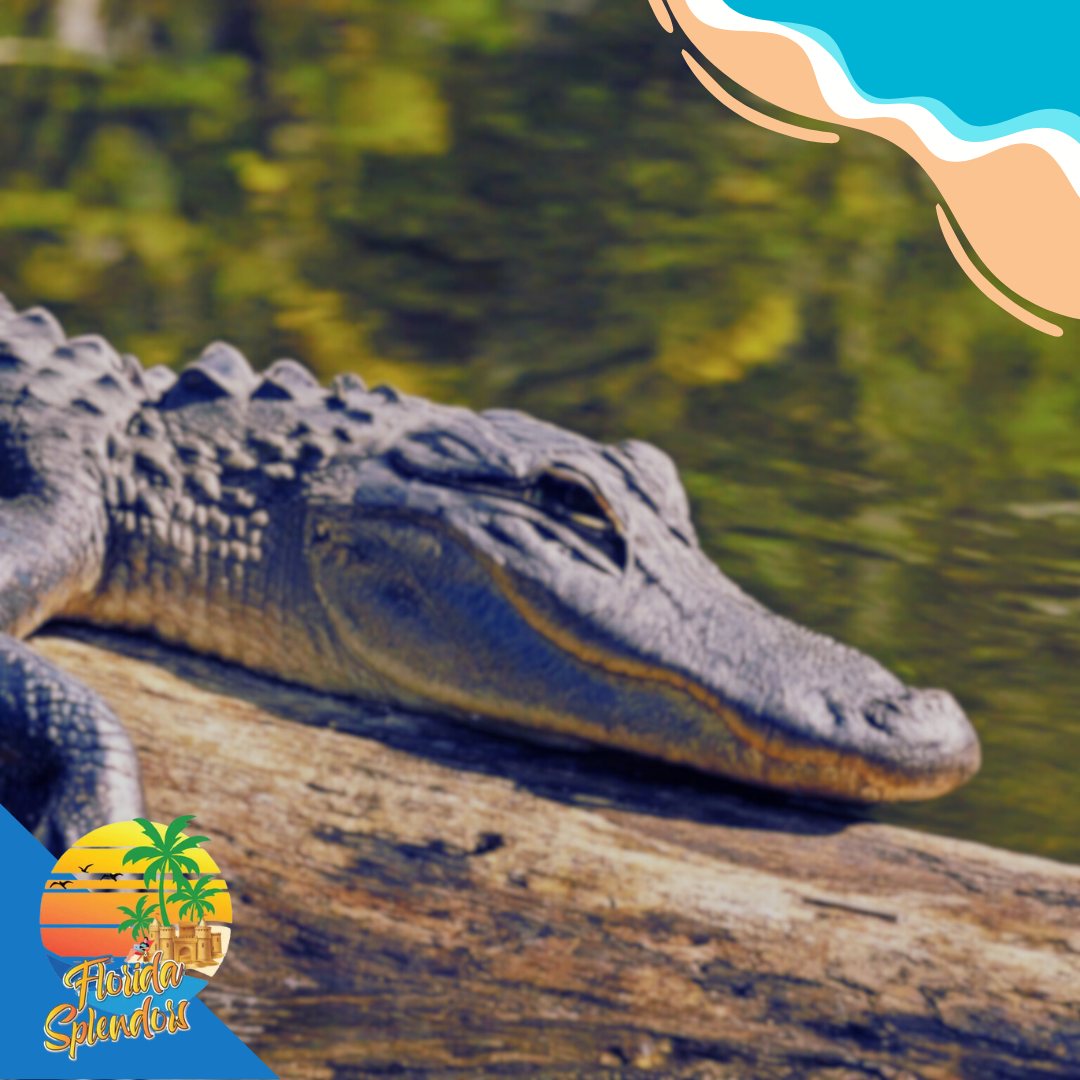
Selecting the Right Equipment
Choose a kayak suited for the preserve’s waters. Sit-on-top kayaks work well for beginners. Bring a paddle that’s the correct length for your height. Pack a personal flotation device – it’s required by law. Wear quick-drying clothes and water shoes. Don’t forget sun protection:
- Hat, sunglasses, and sunscreen.
- Bring plenty of water and snacks.
- Pack a waterproof bag for your phone, keys, and other essentials.
A first-aid kit is a must. Consider bringing insect repellent and a change of clothes.
Understanding Weather Conditions
Check the forecast before you go. Florida weather can change quickly. Summer brings heat and afternoon thunderstorms. Winter is drier and more relaxed. Be aware of water levels. They can affect paddling conditions.
High water might open up new areas to explore. Low water could mean more portaging. Wind speed and direction impact your trip. Strong winds make paddling harder. Tides matter if you’re near the coast. Plan your route with tide times in mind.
Safety Measures and Emergency Preparedness
Tell someone your trip plans. Include your route and expected return time. Bring a charged cell phone in a waterproof case. Know that cell service might need to be better in remote areas. Learn basic kayak safety skills. Practice getting in and out of your kayak. Know how to right it if you capsize.
Bring a whistle to signal for help if needed. Watch for wildlife. Alligators and snakes are common. Give them space. Know how to spot and avoid poisonous plants. Pack a basic first aid kit and know how to use it.
Did You Know?
Big Cypress offers a unique paddling experience with its freshwater swamp ecosystem. You’ll paddle through cypress forests and prairies, which differ from the Everglades’ saltwater marshes. The preserve is less crowded than Everglades National Park, providing a more secluded experience. Wildlife viewing opportunities are abundant in both areas.
Navigating the Waterways
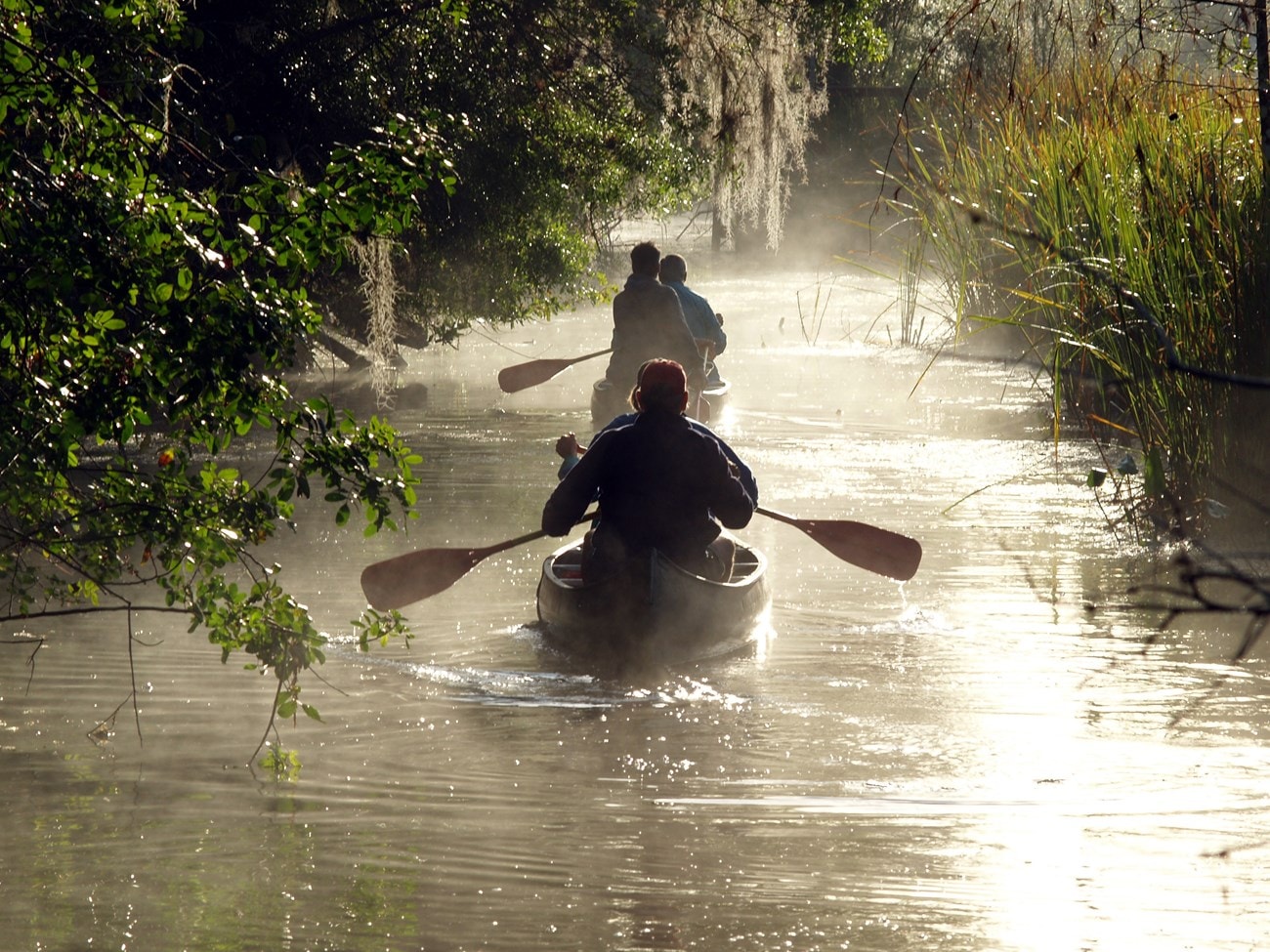
Kayaking Big Cypress National Preserve requires understanding water conditions, recognizing key landmarks, and practicing responsible outdoor ethics. These skills help ensure a safe and enjoyable paddling experience.
Understanding Water Flow and Levels
Water levels in Big Cypress change with the seasons. In summer, higher water makes paddling easier. Winter brings lower levels, which can create challenges. Check water conditions before your trip. The Big Cypress National Preserve website offers up-to-date information.
Pay attention to tides if you’re near the coast. They affect water flow and depth. Plan your route to avoid getting stranded at low tide. Strong paddling skills are important. Some areas have currents that can be tricky to navigate. Practice your technique before tackling more challenging routes.
Identifying Navigational Landmarks
- Look for natural markers like unique trees or rock formations. These help you stay on course.
- Use a waterproof map and compass. GPS devices can be helpful, but only rely on them partially.
- The Turner River Canoe Trail is a popular route with clear markers. It’s a good choice for less experienced paddlers.
- Be aware of your surroundings. Note the position of the sun and any distant landmarks. This helps you maintain your sense of direction.
- If you get lost, stay calm. Backtrack to your last known location, if possible.
Leave No Trace Principles
- Protect the environment by following Leave No Trace guidelines. Pack out all trash, including food scraps.
- Avoid disturbing wildlife. Keep a safe distance from animals you encounter.
- Stay on designated waterways. Don’t create new paths through vegetation.
- Use existing campsites if you’re on a multi-day trip. Set up tents on durable surfaces to minimize impact.
- Be mindful of noise levels. Loud voices or music can disrupt the natural peace and wildlife.
- Respect other paddlers and their experience. Give space to those fishing or observing nature.
Popular Kayaking Routes
Kayaking Big Cypress National Preserve offers several scenic routes to explore. You’ll find options for different skill levels and interests, from winding mangrove tunnels to open waterways teeming with wildlife.
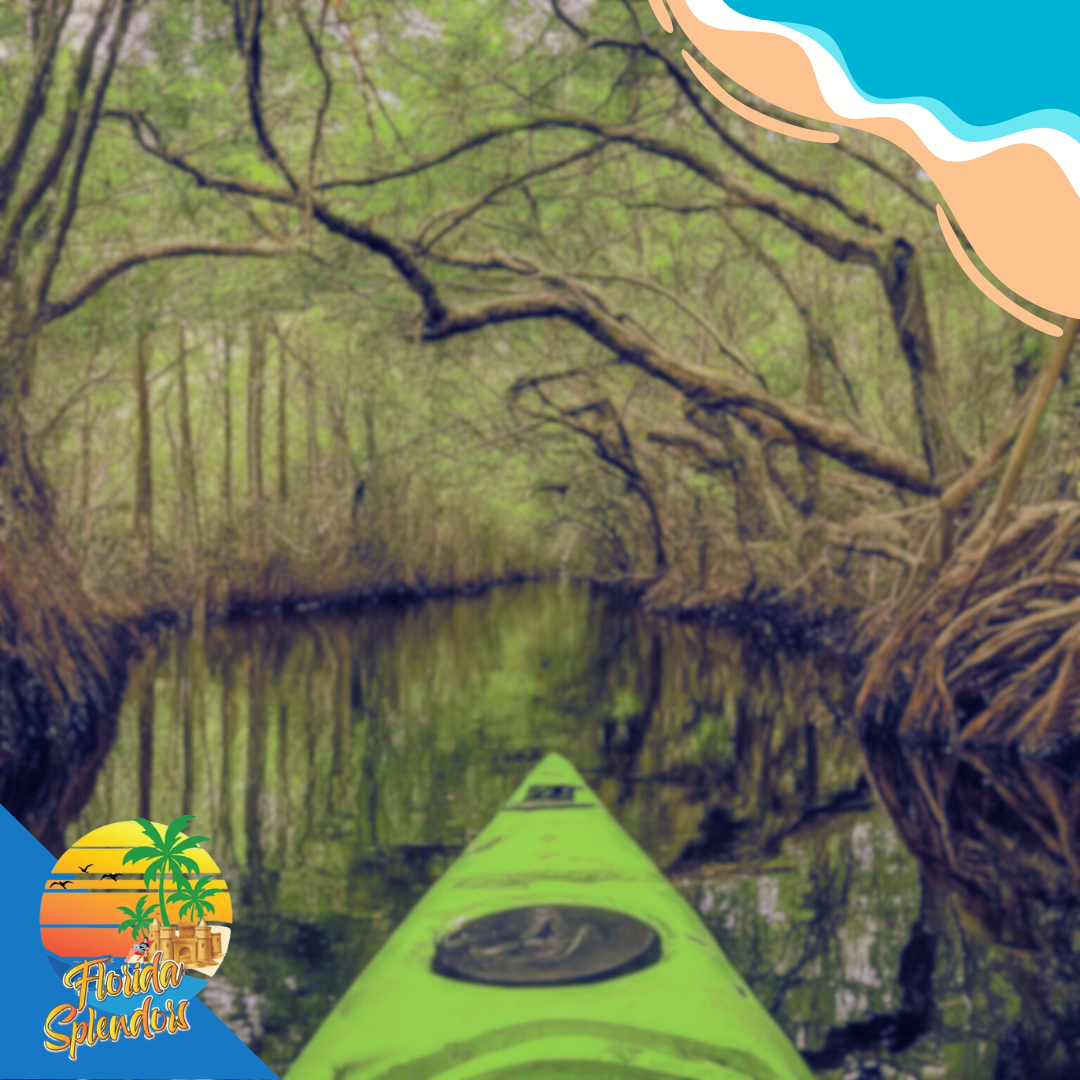
Halfway Creek Loop
The Halfway Creek Canoe Trail provides a circular route perfect for beginners and families. You’ll paddle through narrow mangrove tunnels and open marshes. The loop is about 4 miles long and takes 3-4 hours to complete. Launch your kayak from the Halfway Creek Bridge on US-41.
Along the way, you’ll spot various birds, fish, and maybe even alligators. The trail is well-marked, making navigation easy. Remember to bring plenty of water and sunscreen. The Florida sun can be intense, especially on open water.
Turner River and its Tributaries
The Turner River Canoe Trail is considered one of the best in the Everglades area. You’ll experience diverse ecosystems as you paddle. The trail starts in a cypress swamp, transitions to mangrove tunnels, and ends in open sawgrass prairies. It’s about 10 miles long and can take 6-8 hours round trip.
You can access the trail from the Turner River Bridge on US-41. Paddling skills are important here, as the current can be vital in some areas. Keep an eye out for wildlife. You might see alligators, turtles, and a variety of wading birds.
The Wilderness Waterway
For experienced kayakers, the Wilderness Waterway offers a challenging multi-day adventure. This 99-mile route connects Everglades City to Flamingo. You’ll need to plan carefully for this trip. It takes about 7-10 days to complete the entire route. Camping is available at designated sites along the way.
The route passes through mangrove islands, open bays, and narrow creeks. You’ll need good navigation skills and proper equipment. Tides play a significant role in this journey. Plan your daily progress around the tidal schedules to avoid getting stuck in shallow areas.
Here’s an additional video about kayaking the Turner River in Big Cypress Preserve.
By: Two Travelers Endless Adventures
Wildlife and Conservation
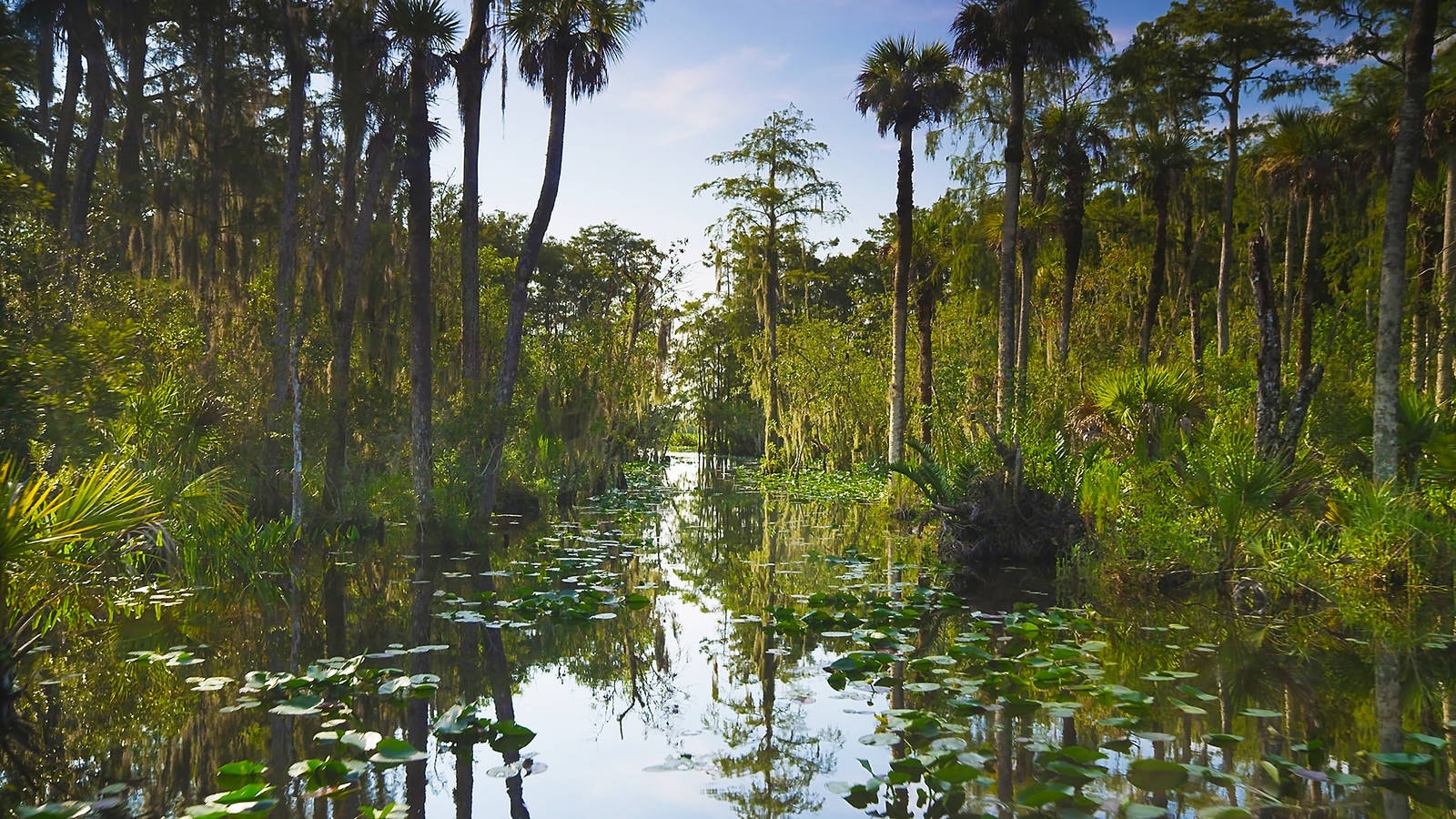
Kayaking Big Cypress National Preserve offers the chance to explore a place teeming with a rich variety of plants and animals. You’ll find unique ecosystems and rare species here, making every paddle a discovery. Though the area faces challenges, ongoing conservation efforts aim to protect its biodiversity for future generations.
Flora and Fauna
You’ll encounter diverse plant life in Big Cypress. Cypress trees, saw grass, orchids, and bromeliads dominate the landscape. The preserve hosts over 700 plant species. Animals thrive in this environment, too.
You might spot alligators, white-tailed deer, and Florida panthers. Birds are plentiful, with over 200 species recorded. The freshwater swamps support many fish species. Turtles, snakes, and frogs also inhabit the wetlands.
Endangered Species
Big Cypress provides a haven for several endangered species. The Florida panther, with only about 120-230 left in the wild, relies on this habitat. Wood storks and red-cockaded woodpeckers are endangered birds you might see. The Eastern indigo snake, America’s largest native snake, is also at risk. Plant species like the ghost orchid face threats, too. These rare flowers bloom in the preserve’s swamps.
Conservation Efforts
The National Park Service works to protect Big Cypress’s ecosystems. They monitor wildlife populations and control invasive species. Prescribed burns help maintain natural habitats. These controlled fires prevent larger wildfires and promote native plant growth.
Ranger-led programs educate visitors about conservation. You can join swamp walks or canoe trips to learn more. Water management is crucial. The preserve team works to maintain natural water flow patterns. This helps both wildlife and nearby communities.
Permits and Regulations
When kayaking Big Cypress National Preserve, you must know the permit requirements and regulations. Backcountry permits are required for all visitors entering the backcountry, including kayakers. This rule applies to both day-use and overnight activities. You can easily obtain these permits for free. Print them at home and fill them out before your trip.
This system helps ensure your safety and allows the park to monitor visitor use. For overnight stays, make sure to secure your camping permits in advance. The preserve has specifically designated campsites for kayakers. Here are some key regulations to follow:
- Leave no trace – pack out all trash
- Do not disturb wildlife or plants.
- Use designated launch sites only.
- Follow fire regulations carefully.
Check the preserve’s official website for the most up-to-date information on permits and regulations. Rules may change seasonally or due to environmental conditions. By respecting these rules, you help protect the unique ecosystem of Big Cypress National Preserve. Your cooperation ensures that future visitors can enjoy this beautiful area, too.
Kayaking Big Cypress National Preserve: Best Times to Visit
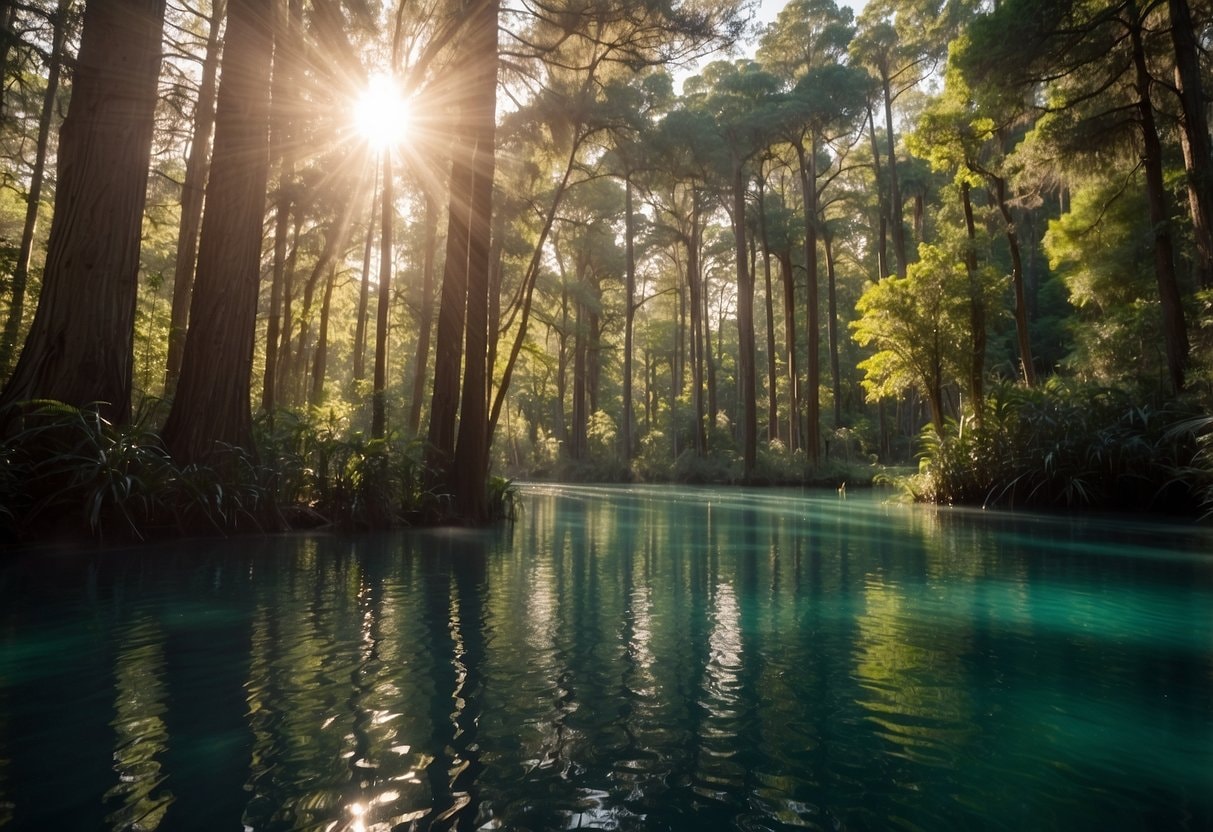
The best time to kayak in Big Cypress National Preserve is during the dry season, from November to April. The weather is more relaxed and more pleasant during these months.
- You’ll find fewer mosquitoes and lower humidity, making your paddling experience more comfortable. Water levels are also lower, making navigation easier in some areas.
- Winter months (December to February) offer the mildest temperatures, with daytime highs around 70-75°F (21-24°C). This is ideal for longer kayaking trips without overheating.
- Spring (March to April) brings warmer temperatures but still manageable conditions. You might see more wildlife activity as animals prepare for the wet season.
- Avoid the summer months (May to October) if possible. High temperatures, frequent afternoon thunderstorms, and increased mosquito activity can make kayaking less enjoyable.
- Early mornings and late afternoons are the best times of the day for kayaking. You’ll avoid the strongest midday sun and might spot more wildlife during these quieter hours.
- Always check the weather forecast before your trip. Sudden storms can develop quickly, especially during the wet season.
Kayaking Big Cypress National Preserve: Local Outfitters and Guides
When planning your kayaking adventure in Big Cypress National Preserve, you have several options for local outfitters and guides. These experts can provide equipment, knowledge, and support for your trip.
Everglades Adventure Tours offers kayak and canoe rentals throughout the year. They also provide guided tours if you’re new to the area or prefer a more structured experience. You can find equipment rentals and guided trips at the following locations near Big Cypress:
- Everglades Area Tours
- Everglades Kayak Company
- Big Cypress Kayak Adventures
These outfitters can help you choose the right kayak or canoe for your skill level and trip duration. They’ll also provide essential safety gear and maps of the preserve. For a more educational experience, consider joining a Ranger-led kayak trip. These trips are offered seasonally and provide insights into the preserve’s ecosystem and wildlife. Before booking with any outfitter, check their certifications and read reviews from past customers. This will help ensure you have a safe and enjoyable kayaking experience in Big Cypress National Preserve.
Cultural and Historical Sites Nearby
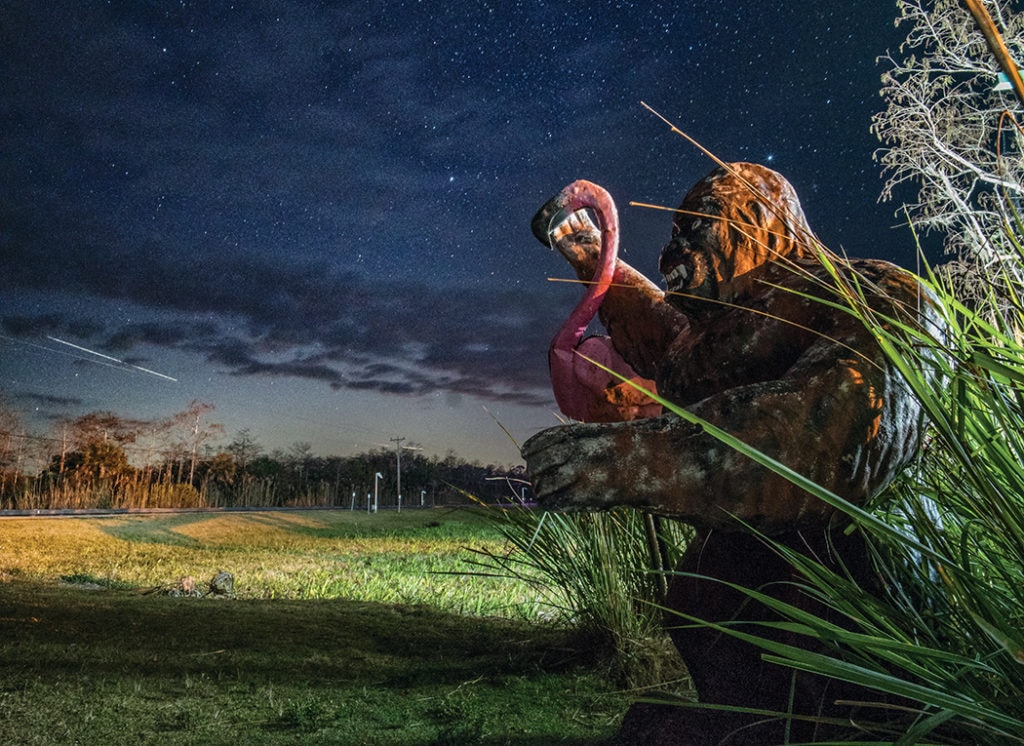
When you’re done kayaking Big Cypress National Preserve, there’s still more to explore. You can visit the Skunk Ape Research Center, just 3.4 miles from the preserve. This quirky spot is dedicated to Florida’s legendary Bigfoot-like creature.
For a taste of local culture, check out the Little Trail Casino. It’s only 1.8 miles from Big Cypress and offers a unique gaming experience. You can also explore the boardwalks through marshlands in the preserve. These paths give you great views of cypress trees and wildlife. You might even spot alligators or manatees!
To learn about the area’s history, join a ranger-led tour. These tours often cover the preserve’s past and its importance to local communities. Remember to stop at the scenic pull-offs along Highway 41. These spots are great for wildlife viewing and taking in the natural beauty of the Everglades.
Here’s another video about kayaking in Big Cypress.
By: The Eco Preservation Project
Embrace the Adventure: Kayaking Big Cypress National Preserve Awaits
Embarking on a kayaking journey through Big Cypress National Preserve is more than just a paddling trip—it’s a chance to immerse yourself in one of Florida’s most enchanting natural landscapes. With its sprawling swamps, rich biodiversity, and serene waters, kayaking Big Cypress National Preserve offers an unparalleled adventure for both novice and experienced kayakers alike. As you navigate the winding creeks and observe wildlife, you’ll gain a deeper appreciation for the unique ecosystems that thrive here. Whether you’re spotting alligators basking in the sun or watching colorful birds soar overhead, each moment on the water is filled with discovery and awe.
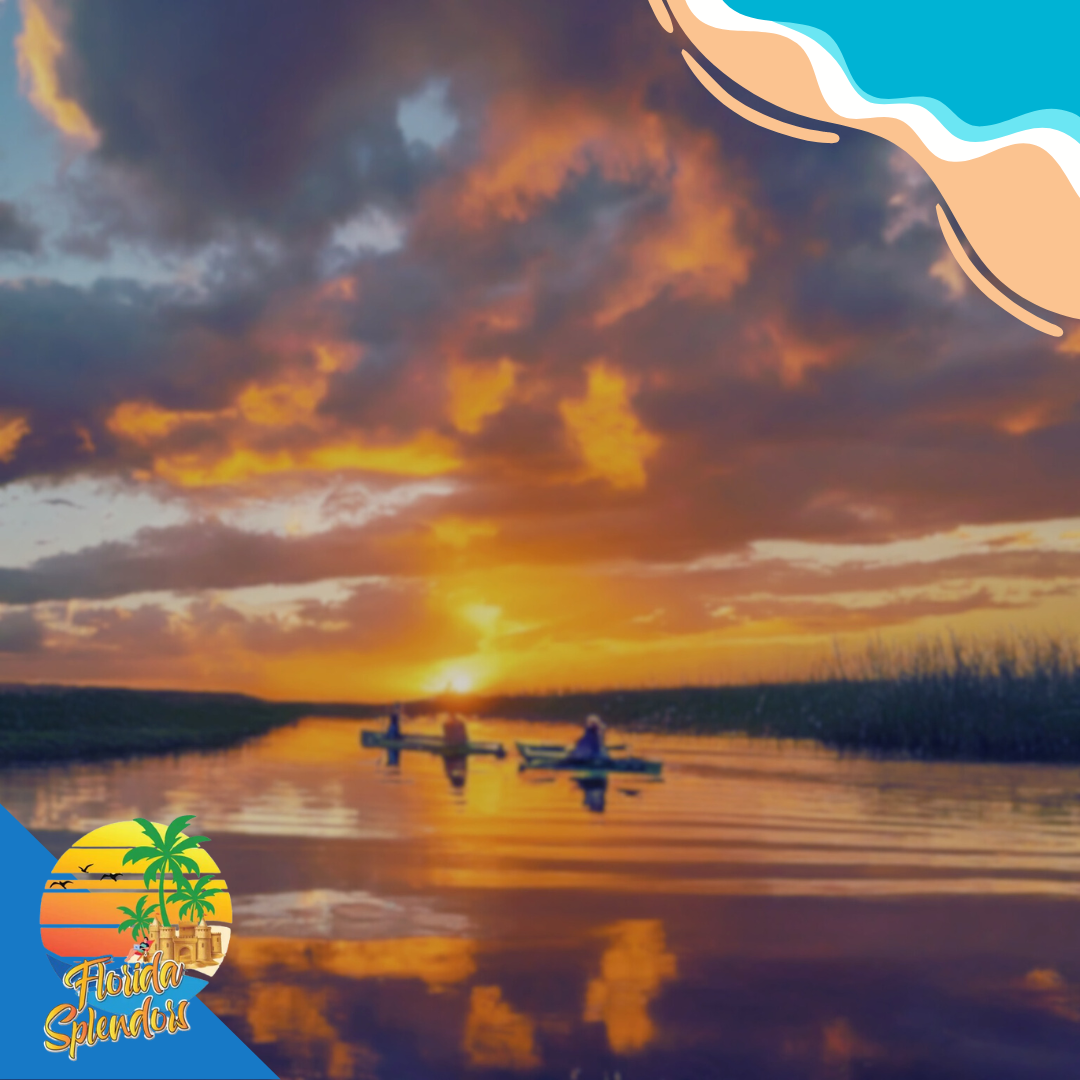
As you plan your visit, remember to check water conditions, bring the right gear, and prepare for the adventure ahead. Embrace the beauty of Big Cypress National Preserve, and let its natural splendor captivate you. Kayaking Big Cypress National Preserve promises an unforgettable experience, blending the thrill of exploration with the serenity of nature. Get ready to paddle into a world where every bend reveals a new wonder and every ripple tells a story of Florida’s hidden gems.
Frequently Asked Questions
What Guided Kayaking Tours Are Available in Big Cypress National Preserve?
The preserve offers Ranger-led canoe and kayak trips during the winter season. These guided tours provide a safe way to explore the waterways and learn about the ecosystem. You can check the park’s website or contact the visitor center for current schedules and availability.
What Are the Best Trails for Kayaking Within Big Cypress National Preserve?
Big Cypress has several paddling trails suitable for different skill levels. The Turner River Paddling Trail is a popular option, offering a mix of landscapes. You can try the routes along the preserve’s border with Everglades National Park for a challenging adventure. These trails require intermediate skills and careful planning.
Is There an Entrance Fee for Accessing the Big Cypress National Preserve Kayaking Areas?
Big Cypress National Preserve does not charge an entrance fee. You can access the kayaking areas free of charge. However, there may be fees for certain activities or services within the preserve. It’s best to check with the visitor center for the most up-to-date information.
Journey Through Florida’s Marvels with Us!
Keep up with us on social media for exciting content, product reviews, and a community that’s all about Florida. Join now to bond with others who share your passion for the Sunshine State!
Keep up to date, get inspired, and stay engaged. See you there!

